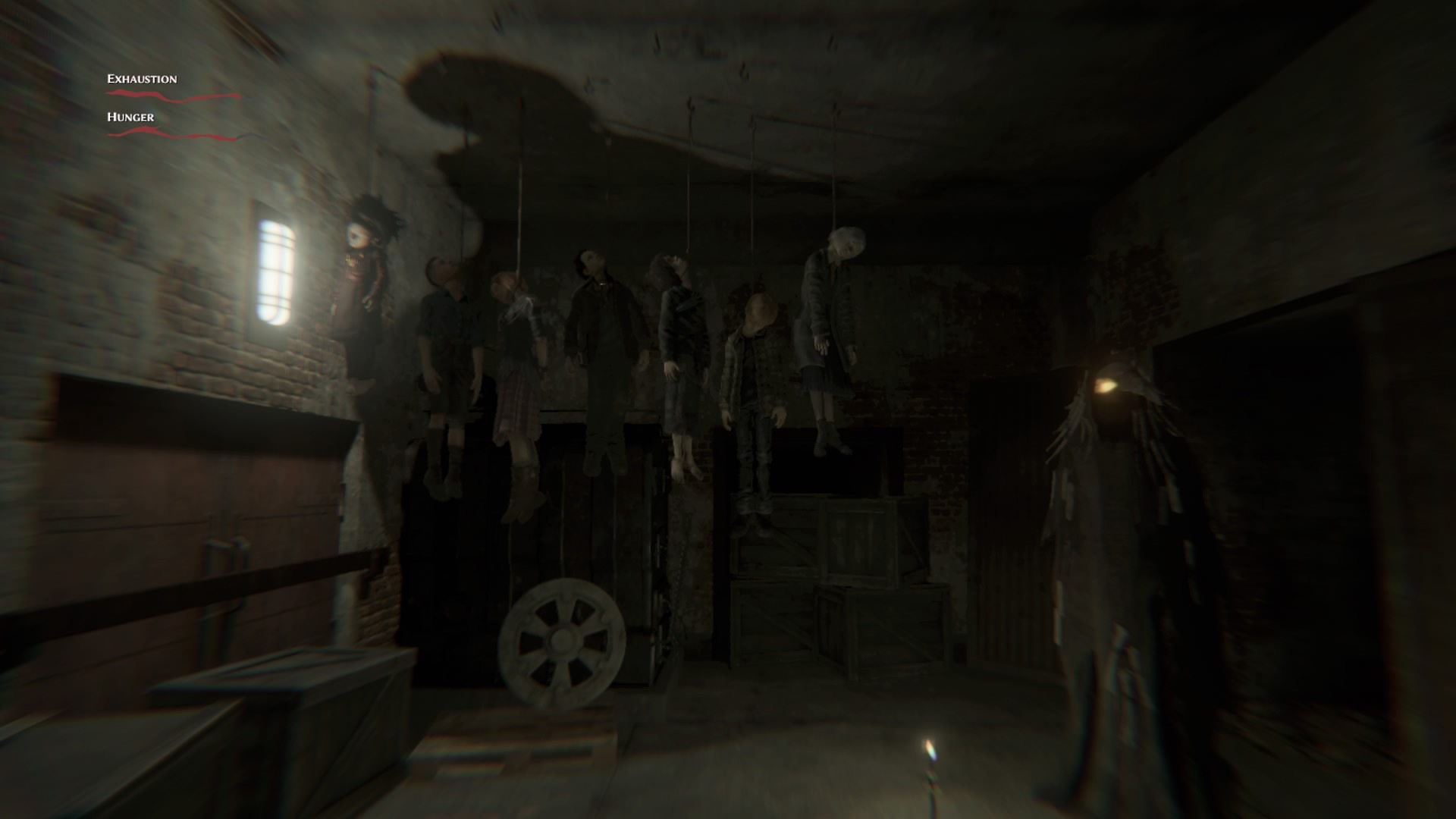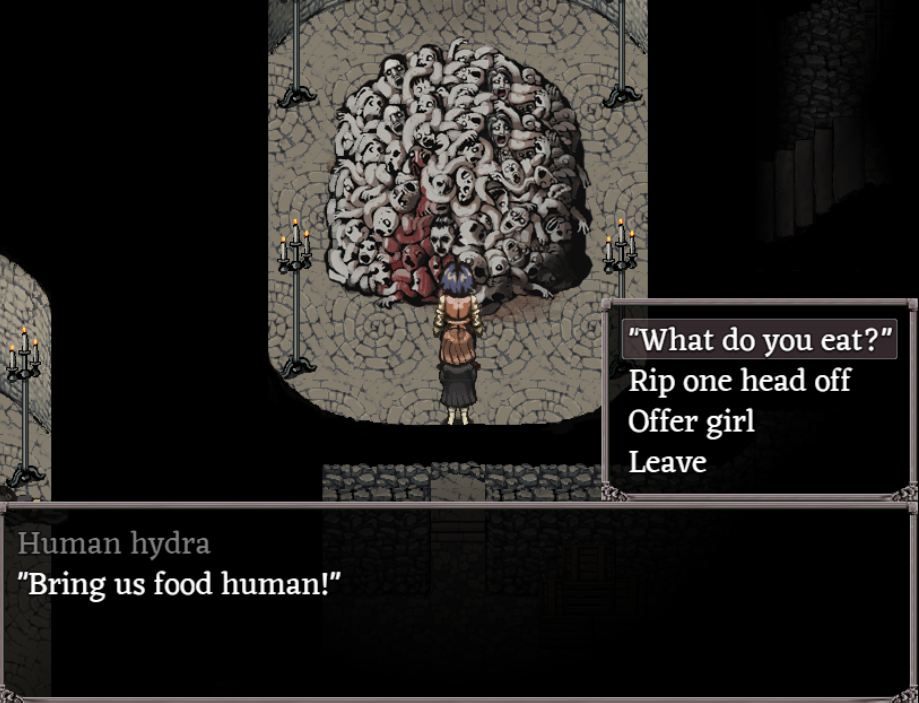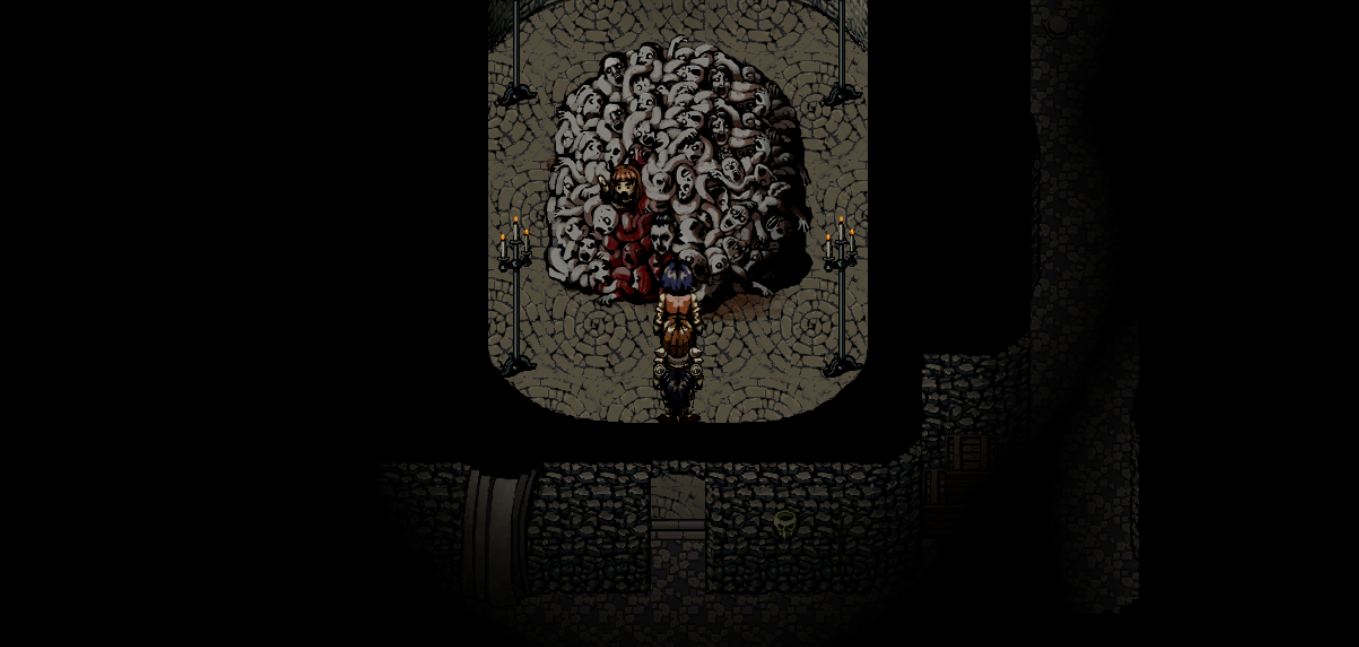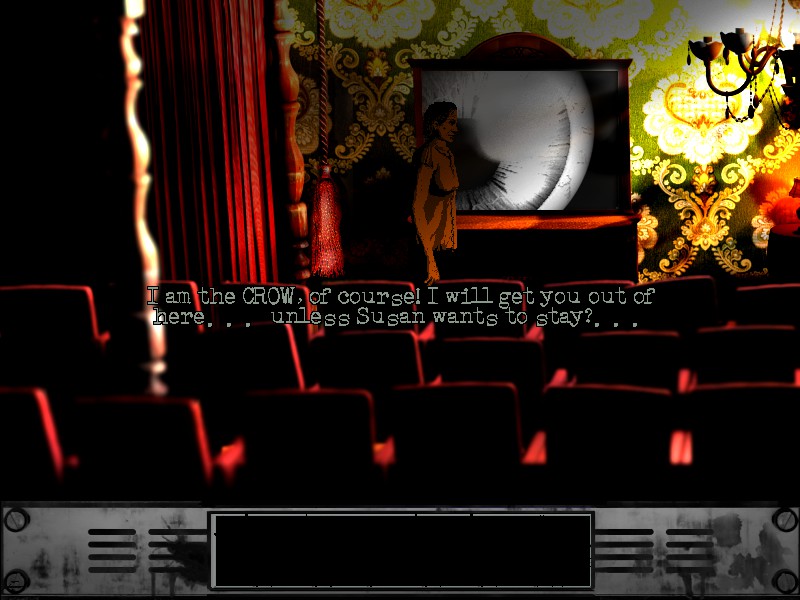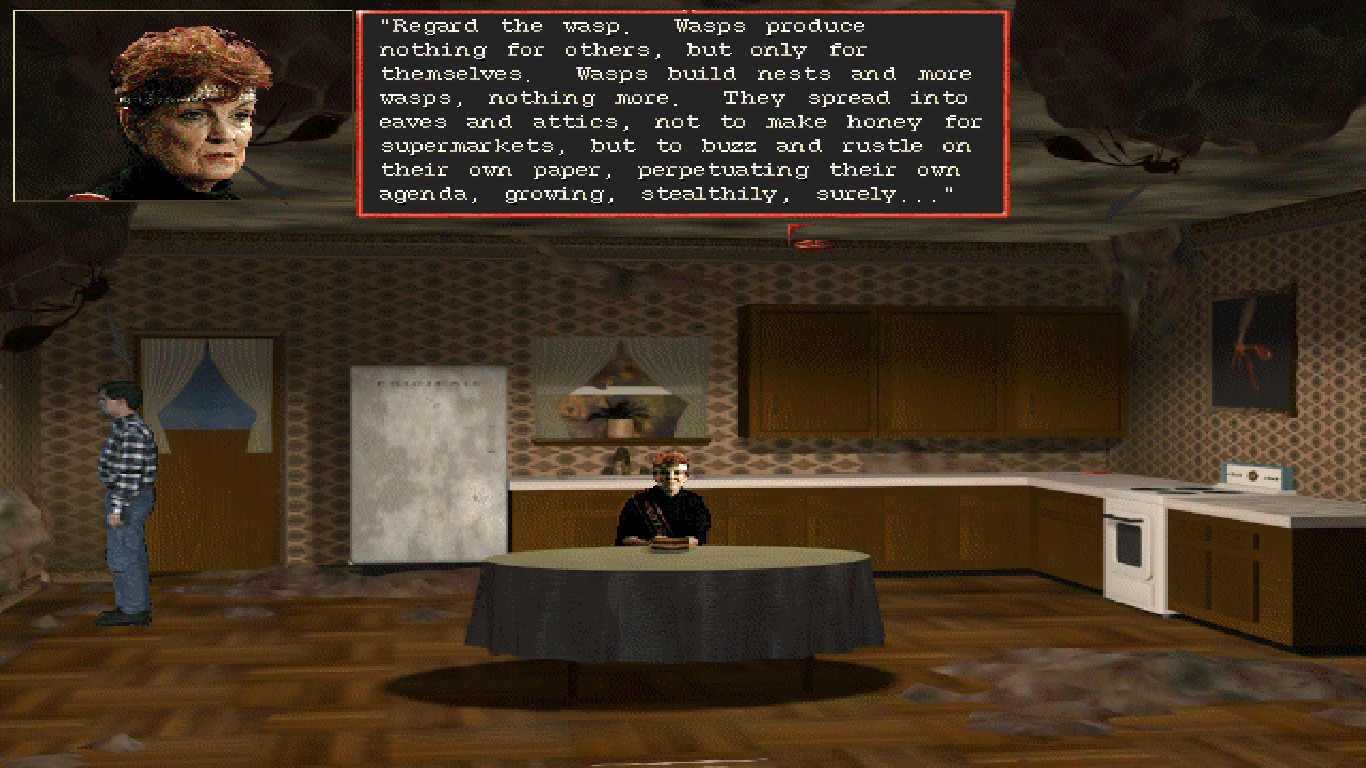Art and videogames are always a sophisticated combination, quite useful for example to improve the atmosphere of a location. Paintings on the walls and iconic statues were always important elements in horror games, since the dawn of the genre, such as artistic elements reborn as puzzles in Resident Evil. Recently, Yuppie Psycho tried a new way of connecting real art inside a game by creating an in-game art gallery of an existing artist.
Yuppie Psycho is a survival horror set in a psychotic corporate environment, built using a detailed pixel-art to create original and nightmarish creatures (have a look here for an example: Monster of the Week: Dot Matrix (Yuppie Psycho)). Suguru Tanaka is instead a Japanese artist focused on a surreal and horror atmosphere. His works are characterised by oppressive black and red colors, used to portray terrifying creatures, impossible architectures, and claustrophobic spaces.
How was this collaboration born? I was able to ask this question to Francisco Calvelo from Baroque Decay, and he was kind enough to answer. The collaboration between Baroque Decay and Suguru Tanaka started back with Catequesis, the first game designed by the team. It was a huge and complex project, a pixel art survival-horror with religious themes, which is now in standby. Suguru collaborated with the team, bringing his art inside the locations of the game.

While Catequesis is on standby, the collaboration took a new shape with Yuppie Psycho, where Suguru’s art was used to convey a surreal-horror atmosphere in a self-contained and unique space. While hoping that the collaboration inside Catequesis will continue one day, let’s focus now on the unique in-game art gallery inside Yuppie Psycho.
The art gallery will introduce itself to the player in the most direct and creepy way possible. The receptionists at the welcome desk are what you would expect from a surreal-horror art exhibition. Their faces are a grotesque mass of raw flesh missing any anatomy, as if their bodies were also a disturbing work of art. The creatures are practically unable to speak, but looking connected to each other like a sort of individual hive-minded being. The way they move and twist their bodies is also a possible clue on how they are part of the same entity. The room is also completely mirrored, exactly divided by a line passing in-between the two receptionists. Maybe the art exposition itself is a giant living organism, and the receptionists are just a fragment of it. There is much of Silent Hill going on in their design, and for sure this is a positive note in their introductory role. Talking about the lore of Yuppie Psycho, the existence of a luxurious art exhibition inside a multimillionaire corporation doesn’t look like an off-key note, but a detail that highlights the world of excesses of rich corporate environments.

The receptionists will provide the pamphlet about the exposition, welcoming the player in the disturbing world of Suguru Tanaka, with the exhibition titled The Blood of the Devil, a world made of empty blackness and bright red geometries. The in-game exhibition is exactly how you would imagine a proper art gallery. The paintings are standing in their supports, between marble columns and with red drapes behind, divided into different sections. Each piece of art shows also its title, as a proper physical exhibition. Let’s have now a look at some of Tanaka’s paintings (virtually) exhibited inside Sintra corporation.


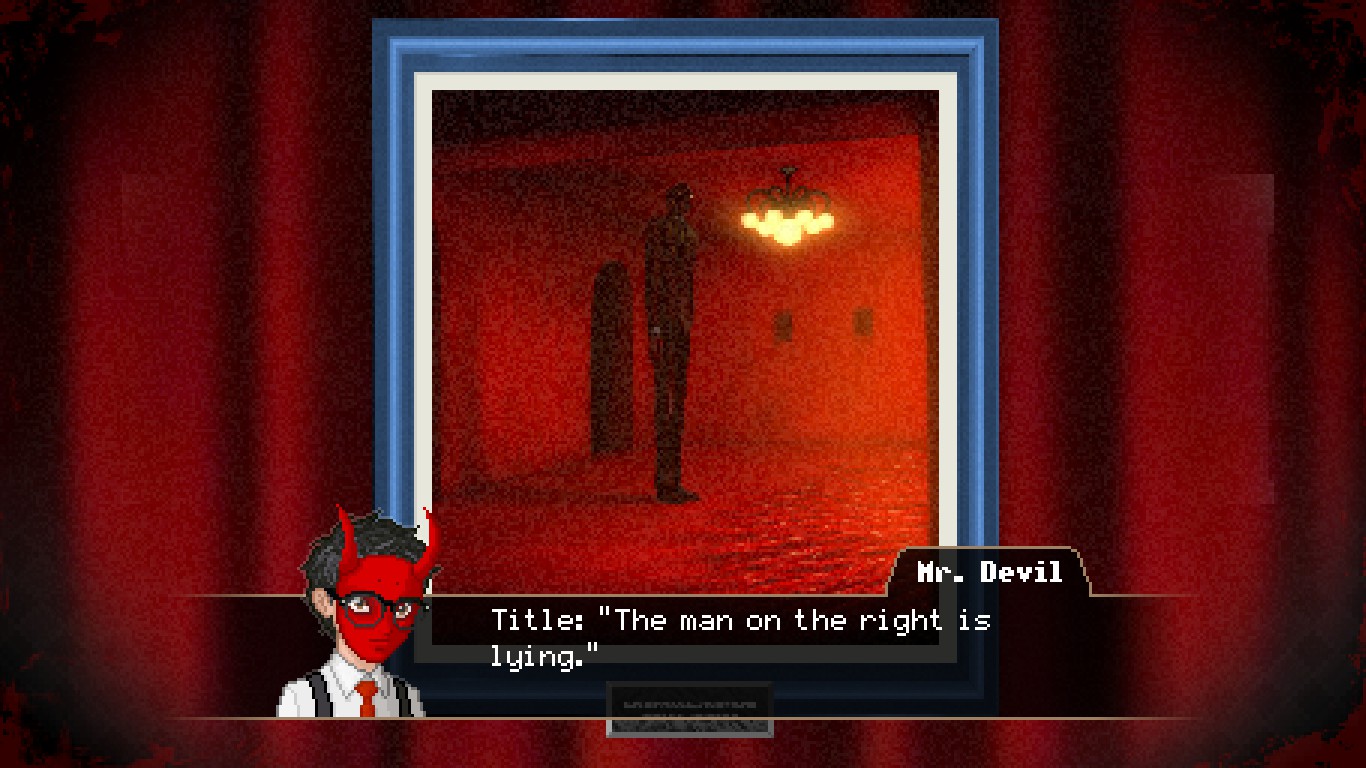
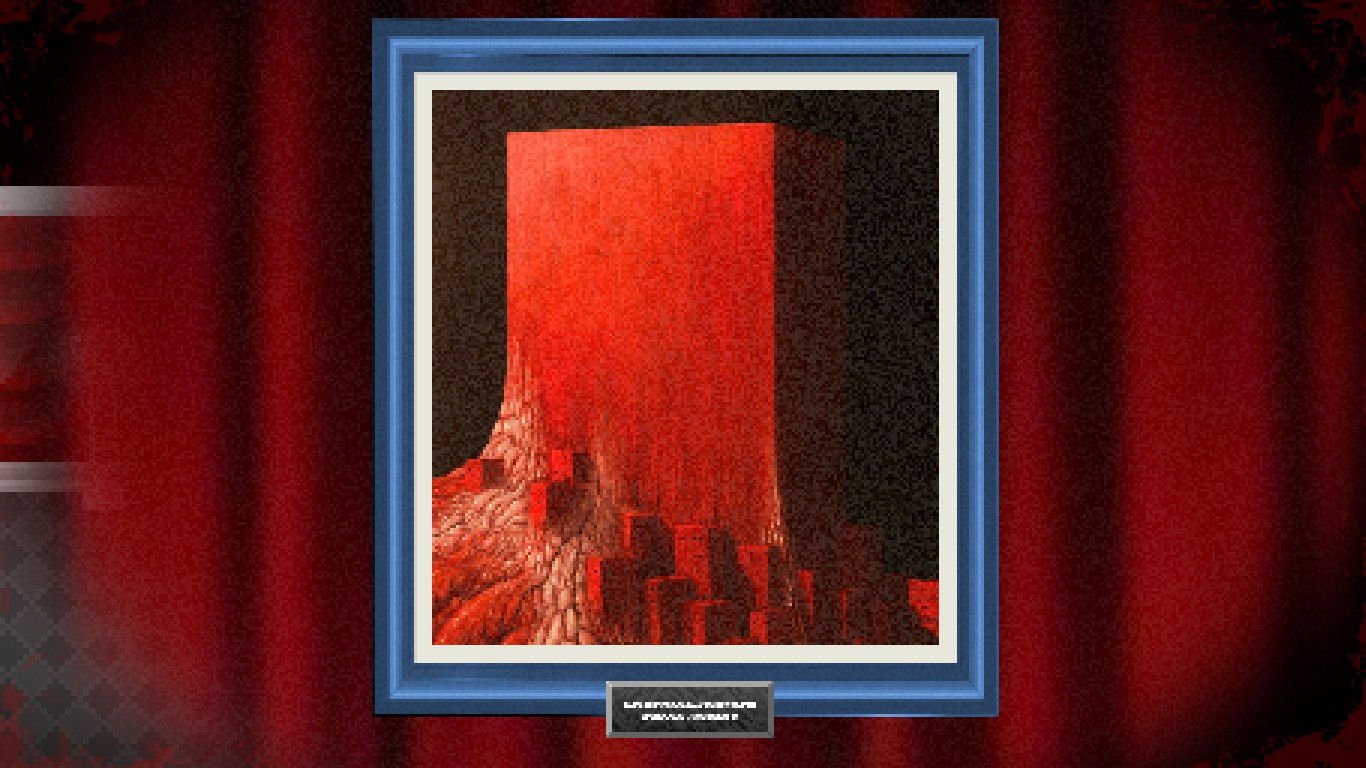
The typical red colors from Suguru’s works are well represented in these paintings, while the contrast with the black is able to generate a unique and surreal environment. It is also interesting to notice how red colors are sometimes part of the architectures, while the creatures are black shadows (such in The man on the right is lying), while instead in other works, such as Olivier, the monsters are redder than the environment. Giant monolithic structures and impossible architectures are not the only elements to be highlighted by ruby colors, and in some cases, organic elements substituted the levigated shapes of the buildings (as in the Hidden meaning of numbers).
Inside the art gallery, the surrounding space is composed of black and dense darkness, where only the art objects are providing life and meaning to the environment. The red colors from Tanaka’s paintings are really fabricating an interesting contrast with the environment, creating a surreal and uneasy space where the art is the most mysterious element. There are no enemies in this place, at least not physical ones, and the painting themselves are hiding the most dangerous threat: the Lady in Red. The pale woman has a disturbing grin on her face, with the skeletal body covered in a red dress. The arms are especially grotesque, so unnaturally long and thin.

The peculiar painting works as a sort of boss battle. Staring directly at the painting of this distorted aristocrat will cause direct damage to the player, as if the painting was emanating nefarious energy. The only way to defeat the Lady in Red is to use the other paintings to make it teleport around, imprisoning it in a place where could not harm anymore. The Lady in Red is a living and dangerous being, probably a part or an emanation of the entity that composes the art gallery.
Creating a proper art gallery inside a videogame is an interesting and brilliant idea, which I am curious to see expressed more often. While fictional crazy artists, such as Stefano from Evil Within 2, are able at the same time to create a twisted artistic environment and to work as the antagonist, the use of existing pieces of art is able to create a bridge between fiction and reality that often benefits horror atmospheres.






